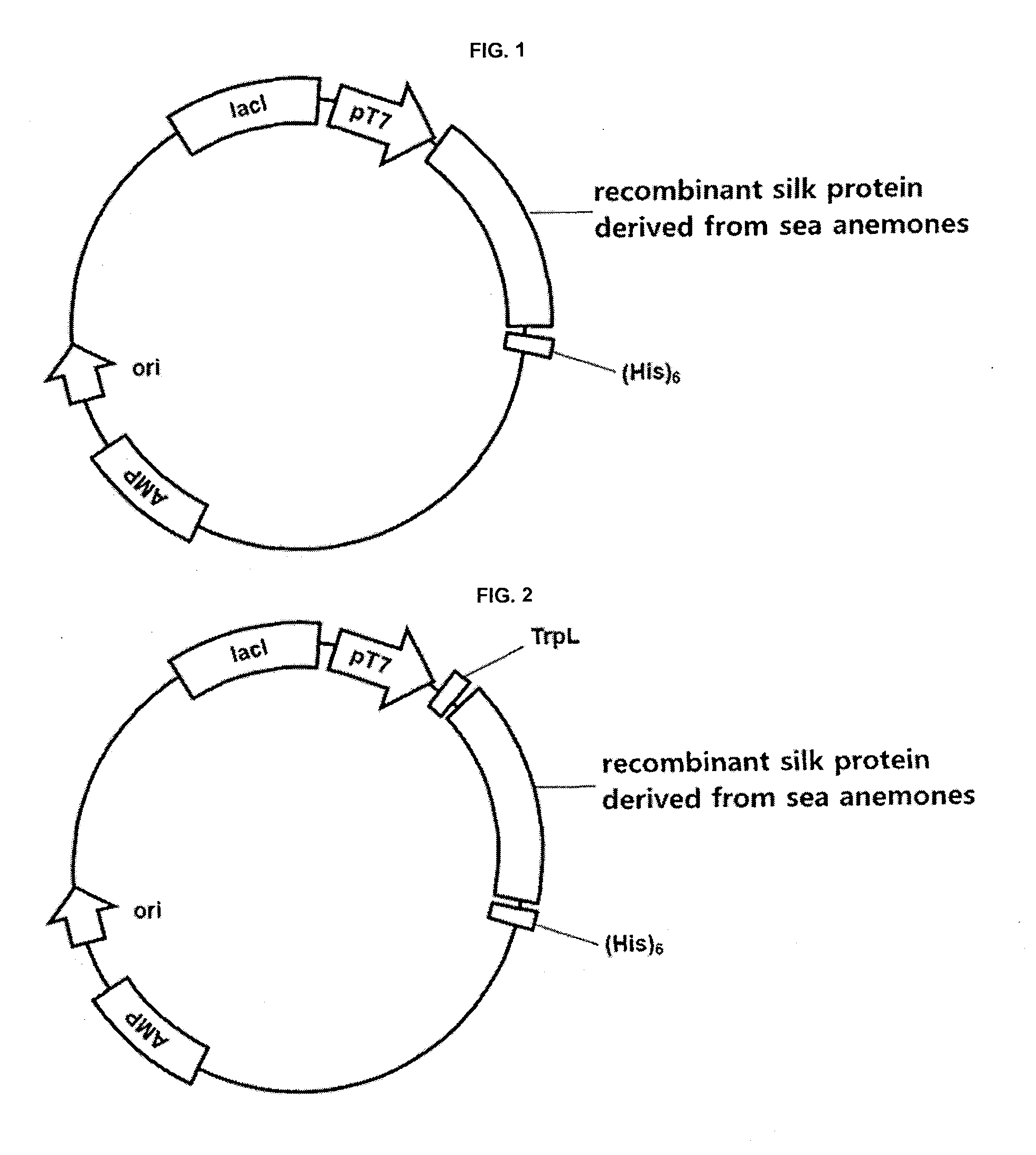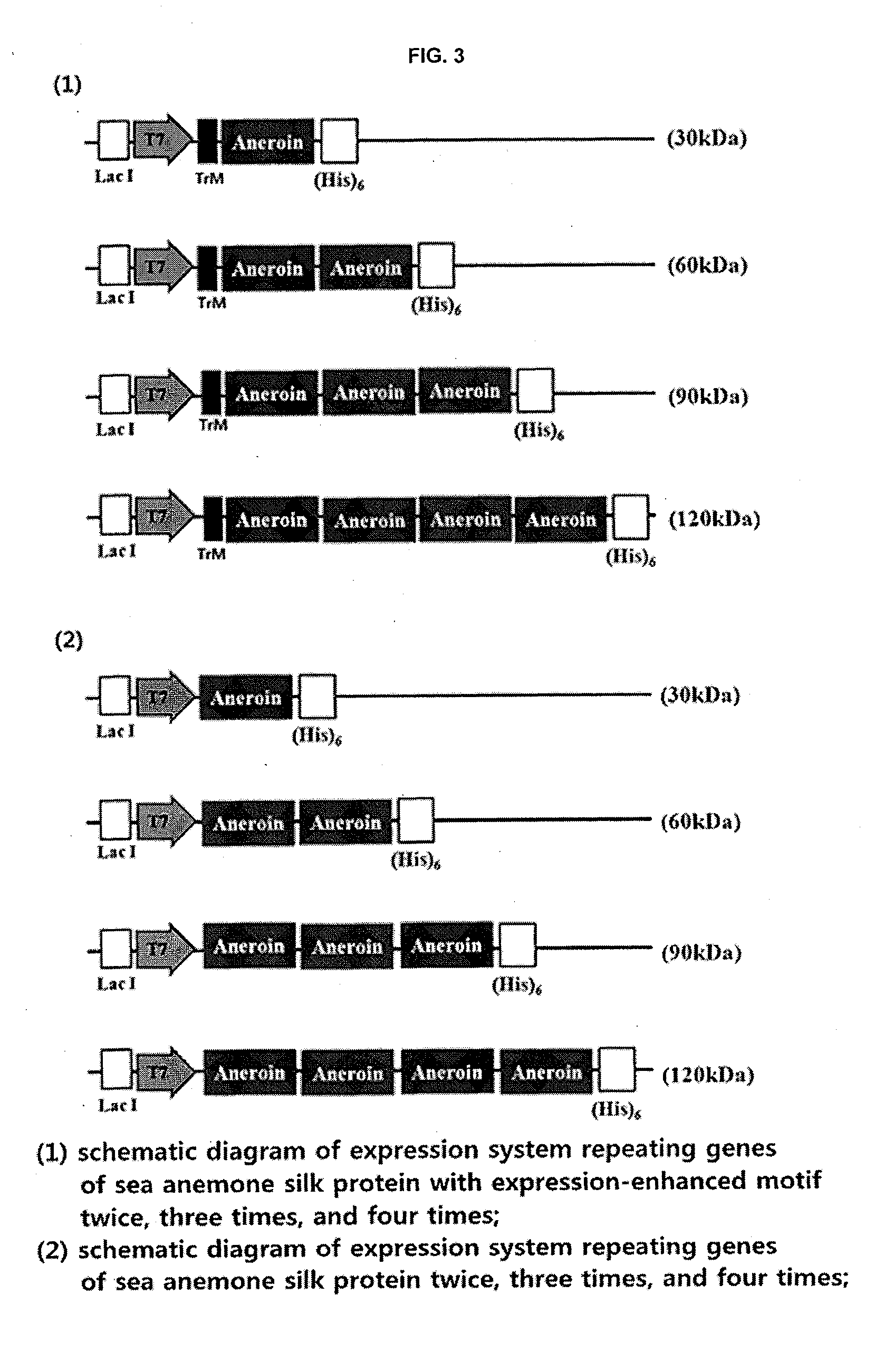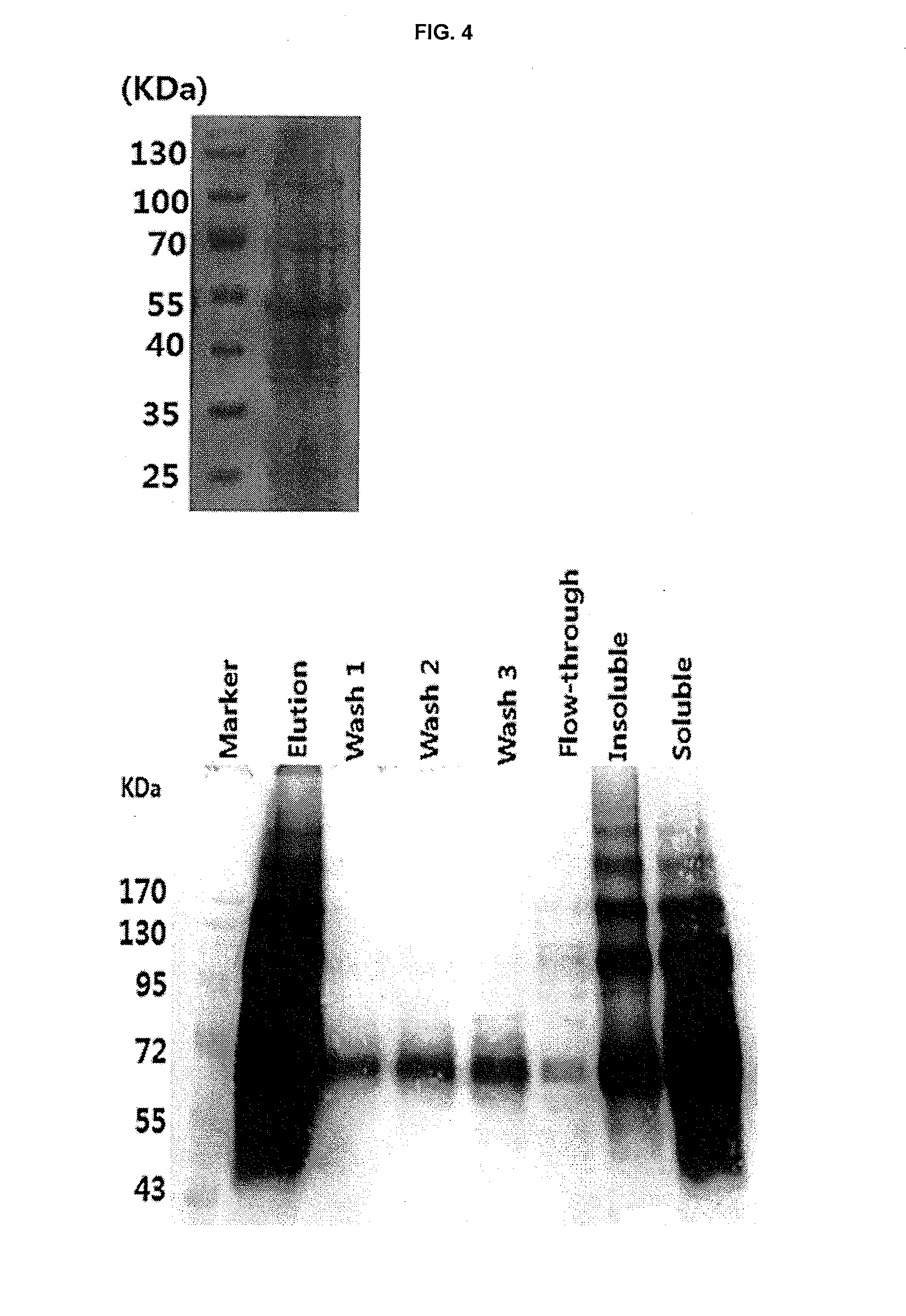Recombinant silk protein derived from sea anemones, method for manufacturing same, and composition for manufacturing silk fibers including same
a technology of recombinant silk protein and sea anemone, which is applied in the direction of monocomponent protein artificial filament, peptide source, peptide, etc., can solve the problems of insufficient durability, inability to raise spiders, and limit the use of silkworm silk protein for industrial materials, etc., to achieve good strength and elasticity
- Summary
- Abstract
- Description
- Claims
- Application Information
AI Technical Summary
Benefits of technology
Problems solved by technology
Method used
Image
Examples
example 1
Preparation of Expression Vector of Sea Anemone Silk Protein
[0096]1. Optimization of DNA Sequence of Sea Anemone Silk Protein
[0097]The sea anemone silk protein used in the experiment was hypothetical protein which is set out in information of NCBI Reference Sequence (XP—001621085.1).
[0098]The sea anemone silk protein is formed of 319 amino acids which mainly include glycine (35%) and proline (18%), has a specific structure sequence in which ten amino acids (GPGNTGYPGQ; SEQ ID NO: 4) are repeated 30 times and one or two amino acids may be different in the middle or in front of the sequence [repeated sequence of the sea anemone silk protein (including modified sequence)—(G / D)(P / S)(G / S)NTG(Y / C)P(G / W)Q; mainly GPGNTGYPGQ, DPGNTGYPGQ, GPSNTGYPWQ, or the like—SEQ ID NO. 4]. Since DNA sequences to be repeated in the same amino acid sequence may be easily removed from E-coli, in order to prevent repetition of the sequence at the DNA level and to facilitate expression of protein, a portion o...
example 2
Preparation of Transformed E-coli Producing Recombinant Silk Protein Derived from Sea Anemones
[0105]Conventionally, E-coli, TOP10 (Invitrogen) which was mainly used for cloning, and E-coli, BL21 (DE3) which was used for protein expression, were made into reactive cells using a CaCl2 buffer. Subsequently, the expression vector prepared in Example 1 was inserted in E-coli by a thermal shocking method of standing for 2 minutes at 42° C. to prepare transformed E-coli.
example 3
Expression and Purification of Recombinant Silk Protein Derived from Sea Anemones
[0106]1. Expression of Recombinant Silk Protein Derived from Sea Anemones
[0107]The transformed E-coli in Example 2 was inoculated onto an LB medium containing 50 mg / mL of ampicillin, followed by shaking for 10 minutes at 37° C. in a 5 L incubator. In order to induce expression of the recombinant silk protein derived from sea anemones, when the (OD600) absorbance of a culture medium was 0.8 to 0.9 at 600 nm, an inducing material, isopropyl-β-D-thiogalactopyranoside (IPTG) was added thereto. The cultured cells were centrifuged for 10 minutes at 4000 rpm to remove a supernatant, and then recovered. The recovered cells were floated in a lysis buffer (pH 8.0, 50 mM NaH2PO4, 300 mM NaCl, 10 mM imidazole) and then broken using a sonicator or a homogenizer. In order to identify expression of the recombinant silk protein derived from sea anemones by SDS-PAGE, a portion of the broken cells were separated into a w...
PUM
| Property | Measurement | Unit |
|---|---|---|
| voltage | aaaaa | aaaaa |
| area | aaaaa | aaaaa |
| length | aaaaa | aaaaa |
Abstract
Description
Claims
Application Information
 Login to View More
Login to View More - R&D Engineer
- R&D Manager
- IP Professional
- Industry Leading Data Capabilities
- Powerful AI technology
- Patent DNA Extraction
Browse by: Latest US Patents, China's latest patents, Technical Efficacy Thesaurus, Application Domain, Technology Topic, Popular Technical Reports.
© 2024 PatSnap. All rights reserved.Legal|Privacy policy|Modern Slavery Act Transparency Statement|Sitemap|About US| Contact US: help@patsnap.com










